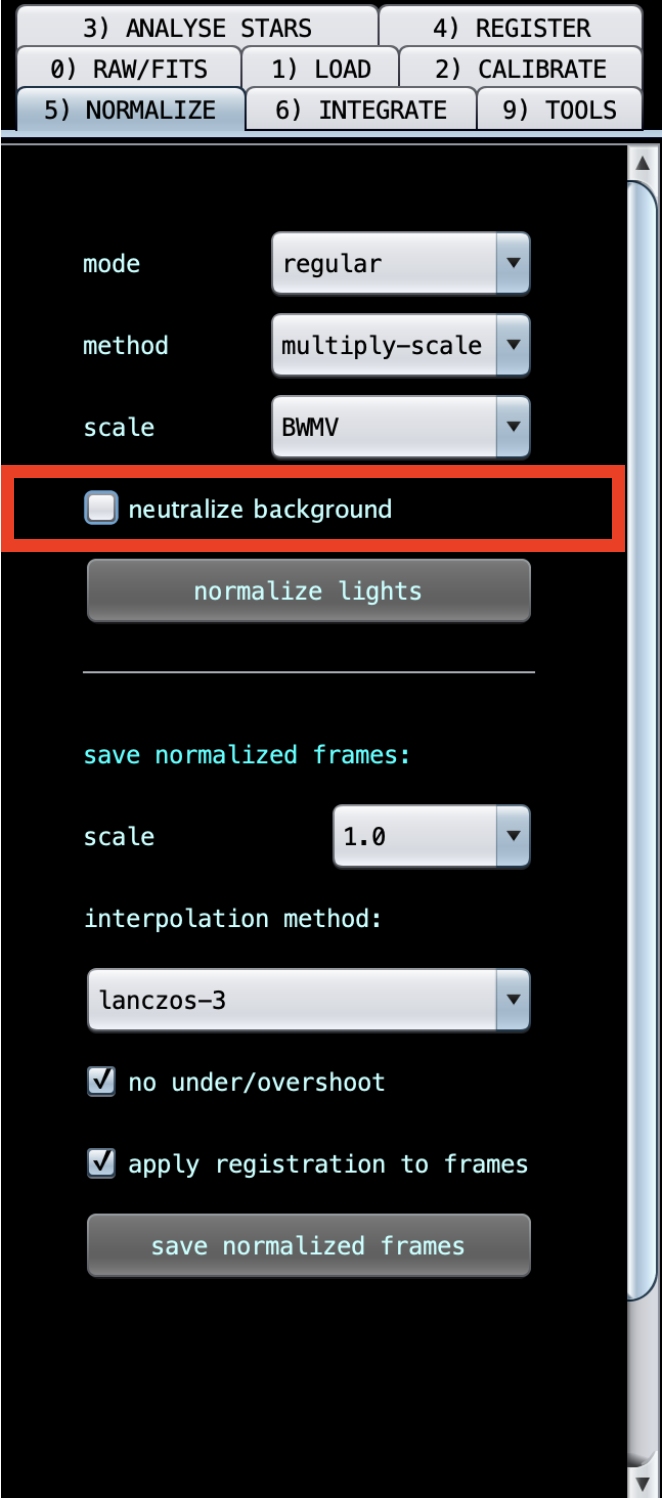- Starting with a good dataset
- Recommended Astro Pixel Processor settings
Recommended Astro Pixel Processor settings

Astro Pixel Processor ("APP") is a paid stacking solution for Intel-based Windows, macOS and Linux OS's. Stacking and saving your data with these settings is essential to getting good results from StarTools.
In addition to the important pre-processing do's and don'ts, these are the settings in the APP tabs that need to be used to optimize datasets for StarTools;
- 0) / RAW/FITS: Bilinear or Adaptive Airy Disk (only relevant for instruments with a Bayer matrix such as OSCs or DSLRs)
- 1) / LOAD: default settings
- 2) / CALIBRATE: default settings except: disable "adaptive pedestal / reduce Amp glow", disable "remove light pollution"
- 3) / ANALYSE STARS: default settings
- 4) / REGISTER: default settings
- 5) / NORMALIZE: default settings except: disable "neutralize background"
- 6) / INTEGRATE: default settings. Refrain from using Local Normalization Correction unless and Multi Band Blending unless absolutely needed (if you need to stack images from multiple nights for example).
- 9) / TOOLS: Do not use anything in this tab (it will interfere with the dataset's linearity and/or StarTools' ability to Track noise grain propagation).

If stacking multiple mono datasets for use in a composite, make sure to use one set's finished stack as a reference to stack the others with; StarTools's Compose module requires every dataset to be the same dimensions. Aligning remaining channels against an initial channel during stacking is particularly important to ensure consistency of point spread functions across channels; do not align finished stacks against each other after stacking.
Finally, do not pre-composite in APP, but use the Compose module in StarTools instead.
You may also be interested in...
- L. B., United States (under Testimonials)
I'm relatively new to image processing and just wanted to say how straight forward and powerful StarTools is.
- FilmDev: Stretching with Photographic Film Development Emulation (under Features & Documentation)
The module can also be used as swiss pocket knife for gamma correction, normalisation and channel luminance contribution remixing.
- Interface (under Introduction)
Navigation within StarTools generally takes place between the main screen and the different modules.
- Video (under Quick Start)
A video is also available that shows a simple, short processing workflow of a real-world, imperfect dataset.
- Hotkeys (under Interface)
